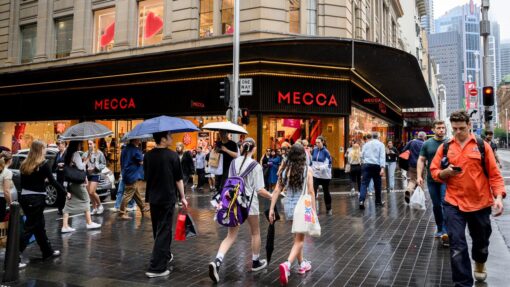More economists expect June rate rise
Colin Brinsden, AAP Economics and Business Correspondent |

Economists at Australia’s major banks are shifting their view on the timing of the first rise in the official cash rate in a decade, with the focus now squarely on the June 7 Reserve Bank board meeting.
A modest 0.15 per cent increase in the cash rate is expected at that meeting to 0.25 per cent, but with further 0.25 per cent hikes over the second half of the year.
“Critically, this week’s (RBA) board statement revealed a shift, removing any reference to a willingness to be ‘patient’, with a focus instead on assessing data over ‘the coming months’,” National Australia Bank chief economist Alan Oster said.
By June the meeting will have seen the consumer price index, the wage price index and the national accounts for the March quarter, which are expected to show that wage pressure is building and price rises have become more widespread.
The wages and inflation figures will be released during the heat of a federal election campaign, which is soon to be called by Prime Minister Scott Morrison.
Westpac chief economist Bill Evans has also brought forward his rate hike expectation from August.
“We have revised down our forecast for the unemployment rate, which is now expected to reach 3.25 per cent by year’s end compared to 3.75 per cent forecast previously,” Mr Evans said.
“That much tighter labour market in turn points to a stronger lift in wages growth in 2023 with a peak of four per cent now expected compared to our previous peak of 3.5 per cent.”
Sluggish wages growth to date is one factor that has held back the RBA from moving interest rates sooner, even though inflation has already accelerated.
Some economists expect next week’s labour force figures for March will show the unemployment rate falling below four per cent for the first time since 1974, and quicker than is being predicted by the RBA and Treasury.
Payroll jobs figures, a guide to the full labour force report, rose 0.2 per cent in the fortnight to March 12 following a 0.8 per cent drop in the second half of February.
Australian Bureau of Statistics head of labour statistics Bjorn Jarvis said the results coincided with adverse weather conditions and flooding in NSW and Queensland in late February.
The ABS also reported on Thursday a sharp narrowing in Australia’s trade surplus in February to $7.5 billion compared with a downwardly revised $11.8 billion in January.
Consumption goods imports jumped 17 per cent in the month, while total exports were barely changed from the previous month with stronger coal shipments offset by a drop in iron ore exports.
“Import demand is an encouraging development for domestic consumption and fits with our view household spending will remain robust in 2022 as low unemployment and elevated savings support sales growth,” JP Morgan economist Tom Kennedy said.
Meanwhile, growth in Australia’s services sector slowed in March as price pressures and staff shortages took their toll.
The Australian Industry Group performance of services index fell 3.8 points to 56.2 in March, although still held above the 50-point mark which separates expansion from contraction.
“Australia’s services sector continued its positive run in March although the pace of growth slowed in the face of intensifying input price pressures, difficulties in finding staff and further wage pressures,” Ai Group chief executive Innes Willox said.
“The strong lift in new orders reported in March will see the capacity of many businesses stretched over coming months while the availability of staff and the supply of inputs are expected to remain constrained.”
AAP


